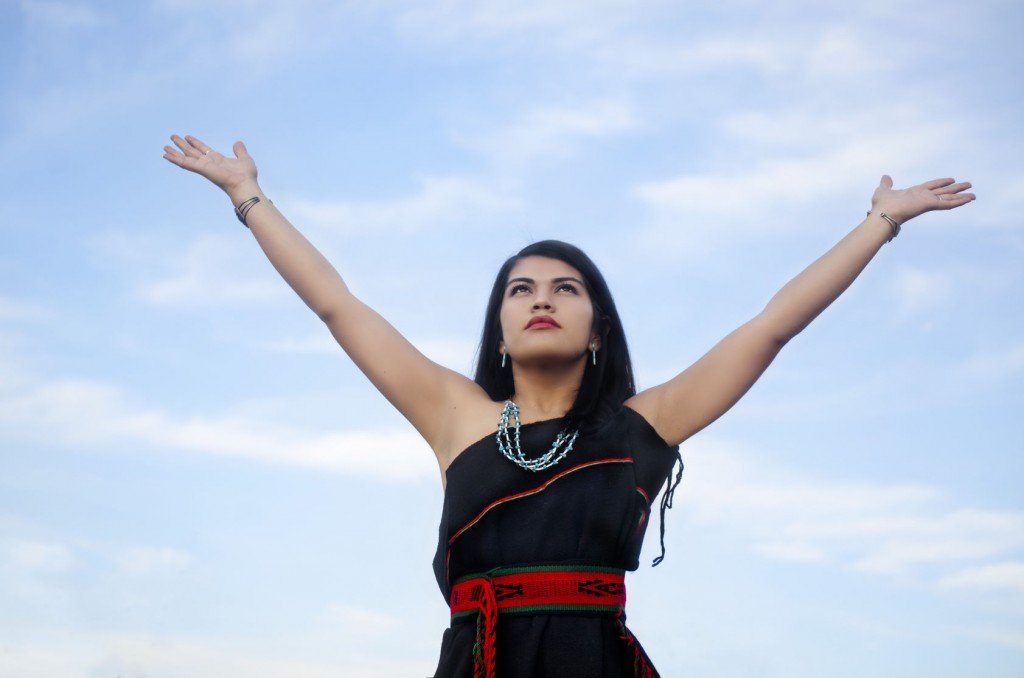Rethinking Possible—It’s Time
David Schleich, PhD
Naturopathic physicians have always known that America has an herbal tradition too, related to those that evolved in India, China, and Europe. Marie Miczak (1999) describes the work of medicine men or shamans in parlaying the traditions of the “medicine wheel” of aboriginal communities across many generations before the arrival of Europeans. In various manifestations, these traditions set out an herbal system associated with personality types, diseases, and root medicines. However, beginning with entrepreneurs like Constantine Samuel Rafinesque, who codified Native American techniques and plants, the Native American healing traditions were assimilated in part into emerging systems of American medicine. Rafinesque essentially established the platform for the later work of Samuel Thompson. When considering the work of Thompson, Miczak asserts: “Thompson rebelled against the orthodox medical practices of the day which included the heavy use of mercury and leeches. He countered with a revival of herbal medicine and whereas he did not give due credit to the source of his enlightenment, it was clear that his roots were indeed firmly planted in the herbal tradition of native ethnobotany” (1999, p. 5).
Thompson’s assimilation of native ethnobotany moved quickly into the European and U.S. marketplaces via such entrepreneurs as Drs. Albert Isaiah Coffin and Wooster Beech. Their protocols of patent medicines and self-treatment preparations became part of the repertoire of many groups, who eventually evolved into the National Association of Medical Herbalists, the forerunner of today’s National Institute of Medical Herbalists. That era was, of course, different from our own. The Pure Food and Drug Act of 1906 (and the famous Shirley Amendment of 1912, making it illegal to assert therapeutic claims) was not around to stop unscrupulous use of herbal formulas laced with alcohol, heroin, and other ingredients. However, very present even then were the efforts of pharmaceutical companies, such as Ely Lilly, to patent traditional Native American herbs. The rejection of Ely Lilly’s efforts to patent echinacea because it was universally available already is an indicator of the confusing landscape of native ethnobotany, traditional Native American healing practices, and the swirling intersection of orthodox biomedicine with those ways and tools of healing.
Today, most initiatives linked to Native American traditional healing are bookended by the reductionist nature of biomedicine, although native healing traditions are characterized by values and a philosophy that are far more in tune with naturopathic medicine: “The Native American concept of medicine is to enable the patient the ability to take part in caring for their bodies in a way that is in total harmony with nature” (Miczak, 1999, p. 9).
The issues raised, solutions considered, and debates rendered about the disparities in health outcomes for Native Americans that have happened recently are benefiting from growing research about Native American healing traditions and materials, although such symposia are often against the backdrop of allopathic health promotion, service, and rules. The naturopathic profession’s participation in this slow shift, however, is marginal at best, even though our profession has been powerfully aligned with Native American healing philosophy for more than a century. To illustrate, less than 2 years ago (November 2009), the leaders of 564 American Indian tribes gathered in Washington, D.C., to meet with federal government officials. At the top of their list of concerns was health. Indeed, the health disparities between Native Americans and other members of the U.S. population (Roubideaux, 2005) was a strong anchor of concern on the agenda. That and many issues related to Native American healthcare policies and practices were raised during that meeting, ranging from North Dakota Senator Byron Dorgan’s assertion that there was a need to ease “the full-scale health care rationing going on on Indian reservations” (Belluck, 2009), to Mr. Obama’s proposal to increase by 13% the budget for the Indian Health Service, a federal program that provides free care to 1.9 million Native Americans who belong to federally recognized tribes and most often reside on tribally owned land. Another issue discussed at the meeting involved an open dialogue about “cost containment rules” that link coverage for care to establishing residency on reservations, despite the millions of Native Americans who live elsewhere in America.
This important summit of native leaders has proven to be the largest of its kind in American history. The informing framework for this conference of elders and leaders assumed the dominance of biomedicine principles, processes, and protocols. Unfortunately, naturopathic medicine was not at the table in any meaningful way. The record of discourse at the summit included debates about problems, such as penalties and copayment exemptions, respecting Native American sovereignty, and a debate about trying to make up for “owed” or “neglected” healthcare. Several breakout sessions concentrated on how some healthcare practices had the negative effect of “keeping many eligible Indians from enrolling in Medicaid,” for example (Belluck, 2009). In any case, whether it is about the 2009 Indian Health Care Improvement Act and its friendlier approach to prevention and research about prevention or is about the proliferation of data emerging about so-called traditional healing studies appearing in the National Library of Medicine or on PubMed, the naturopathic profession is not strongly present in the conversation, despite the best efforts of the American Association of Naturopathic Physicians and individual naturopathic professionals and advocates. It’s time we were.
Let’s skip ahead 2 years. This past summer, also in Washington, D.C., there were almost 50 students representing 22 tribes from America who officially closed something called the Native North American Youth Initiative. This program, now challenged by a loss of federal funding, helped native students achieve a better understanding of careers in health. Naturopathic medicine was not on that agenda either, despite what many NDs have long felt to be a kindred philosophy and methodology in health promotion and purpose. Can you imagine if the Association of Accredited Naturopathic Medical Colleges (AANMC) initiated a systemwide effort to attract Native American and First Nations Canadians to naturopathic medicine and a broad front of educational and clinical resources from our world contributed to the solutions? Pathways and models to help us do just that already exist. The terrain in which our efforts would be focused is complex and politically land-mined:
“Native Americans face enormous obstacles to pursuing careers in medicine. They represent only 0.3 percent of students entering medical school, even though they account for nearly 2 percent of the U.S. population—a rate of matriculation far below those for blacks and Hispanics. In 2004, only 98 Native Americans graduated from the 125 accredited medical schools in the United States” (Sequist, 2005, p. 1885).
The Time is Right
Efforts are under way to deal with these challenges. For example, the Native American Health Education Fund provides financial aid to Native Americans interested in health-related careers. Clinical and public health data make it clear that native North Americans have multiple medical needs that the respective federal governments of the United States and Canada know are not being met by native communities or reservations. Increasing and recurrent literature is available about higher rates (compared with nonnative communities) of diabetes and associated complications, infant mortality, and heart disease. The Native American Health Education Fund scholarships are focused on students who show a desire to return to their communities and provide improvements in healthcare to address these difficult realities. Collectively, we can help in that effort. The late Linda Hirschmann, an author, teacher, and humanitarian who was especially concerned with the needs of indigenous peoples, began the fund at Duke University (Durham, N.C.). The Native American Health Education Fund awarded its first scholarship in 1990, and since then more than 100 scholarships have been awarded for careers in biomedicine, nursing, dietetics and nutrition, medical technology, physical therapy, pharmacy, social work, and medical research (biochemistry). Not one has been targeted to naturopathic medicine.
The time is right for a naturopathic presence in this work for so many reasons. The naturopathic community can encourage translational research (action research) as part of the abundant flow of new work being done. That work ranges from, say, investigations by Lecompte and Cah (2008) comparing demographic data between 1996 and 2001 about aboriginal and nonaboriginal workers in healthcare occupations, to pioneering work by Wilson and Rosenberg (2002) on the determinants of health for First Nations peoples in Canada, framed around the question of whether existing healthcare services can respect and accommodate traditional activities in native communities. Such studies continue to accumulate, delineating the challenges before us to help these communities. As a case in point, work by Lix, Bruce, Sarkar, and Young (2009) about risk factors and chronic conditions among native populations is a remarkable window on what naturopathic medicine could provide by way of culturally respectful and effective support. However, a glaring gap in linking these needs to the formation and mission of the naturopathic profession shows up too in this accumulating literature. In the community health context, work by Johner and Maslany (2011) contemplates, as one would expect, only the biomedicine paradigm in its suggestions about paving a pathway for inclusion for native North Americans.
Perhaps a useful model for us might be the Johns Hopkins Bloomberg School of Public Health’s Center for American Indian Health (Baltimore, Md.). The center gets its work done by focusing on training, employment, and professional education, against a framework of cultural competency and community acceptance. It began in the 1980s with Southwestern tribes. Several of its milestones are notable suggestions for the naturopathic profession to emulate through the colleges and professionwide sponsorship of clinical opportunities. For example, its Training American Indian Health Professionals and Scholars program and an infant death prevention program would feel very familiar to NDs on close inspection:
Since 2001, we have provided graduate training public health science and practice at Johns Hopkins School of Public Health to more than 150 Native scholars. We have also funded and mentored 2 Native doctoral students, 2 Native nursing students and 5 public health graduates at Johns Hopkins Medical Institutions. Professional training is a major priority for the Center, as the paucity of degreed American Indian health care providers continues to cripple Indian communities’ response to their own health issues. . . . In the late 1970s, widespread diarrheal disease was killing Indian infants at rates seven times the national average. In early 1980s, working with the White Mountain Apache Tribe, Mathuram Santosham, MD, MPH, introduced Oral Rehydration Therapy (ORT), a simple electrolyte solution—now commonly known as “Pedialyte”, to prevent deaths and hospitalization from dehydration. Native outreach workers were trained to make home visits to teach parents proper use of ORT. Rates of diarrheal deaths among the participating tribes (Apache and Navajo) dropped virtually to zero. (http://www.jhsph.edu/caih/about/history.html)
If one examines the leadership of this initiative, the biomedicine platform from which it springs is not surprising. Dr. Santosham, director of the center, is interested in clinical and epidemiological aspects of vaccine-preventable bacteria and viral infections in children. Katherine L. O’Brien, MD, MPH, the associate director, has the same research focus. Allison Barlow, MPH, MA, is also an associate director, and her focus is on adolescent behavioral and mental health promotion for reservation-based American Indian tribes. Their remarkable work is driven by research money, by federal funds for aboriginal healthcare, and by private donations, such as those from the National Football League Players Association, a key partner. The National Football League Players Association’s outreach and groundwork, such as the annual Native Vision Sports and Lifeskills Camp, have been very successful. It is not beyond the pale to think that the naturopathic profession, through the AANMC, could construct similar partnerships. Nor are the annual Center for American Indian Health Institute Courses at Johns Hopkins, which draw medical doctors and public health professionals to these communities with abundant networking and resource generation, beyond our capacity and imagination. A single credit hour for these courses is $892, with topics like “interdisciplinary approaches to understanding the health of American Indians” and even an “introduction to qualitative and quantitative research methods.” Given naturopathic medicine’s rich connectedness philosophically and in terms of modalities and educational capacity with traditional medicine, our ability to do similar work in communities all over North America is very real both from an epistemological perspective and a pragmatic clinical perspective.
Efforts that have traction, such as the Indians Into Medicine Program (INMED) at the University of North Dakota (Grand Forks), contribute to barely 1% of matriculated medical students in the United States. Since 1973, INMED has accepted each year on average 7 students from federally recognized tribes in North Dakota. Their educational framework for this special cohort includes tutoring, a dedicated library, counseling, and emergency financial aid. To date, 196 INMED students have made it through the program, with 70% of them returning to work as physicians in their tribal communities.
Similar momentum is occurring in New Mexico. The University of New Mexico (Albuquerque) specifically recruits American Indian students by making younger students aware of the career possibilities in biomedicine. The University of New Mexico’s BA/MD degree program reserves 23 spots in the first-year cohort for those from diverse backgrounds, including the Navajo tribe. These students agree to practice in New Mexico’s underserved communities. This past April, as part of the Four Corners Alliance, New Mexico collaborated with the Association of American Indian Physicians to conduct a preadmission health careers workshop. Valerie Romero-Leggott, MD, vice president of the University of New Mexico’s Health Sciences Center Office of Diversity, reported that this event “gave aspiring doctors, nurses, pharmacists, and physician assistants inside information on how to be a successful applicant” (Howell, 2011). The format had students processing through mock interviews and participating in workshops about financial aid and curriculum vitae and interview preparation techniques. Thomas Sequist from Harvard University (Boston, Mass.) points out the following:
The 12-year-old Four Directions Summer Research Program was created and continues to be run by Native American faculty members and students at Harvard Medical School to address challenges faced by Native American undergraduates. We focus on recruiting from regions where promising students might not otherwise have such opportunities. Our selection process is atypical: we forgo academic transcripts in favor of evidence—in recommendation letters and personal statements—of unrealized potential. We also look for applicants with a demonstrated commitment to the Native American community. (Sequist, 2005, p. 1886)
Appropriating the Funds
Like Four Directions, numerous “funds” and agencies are poised to help. In most cases, though, these agencies and groups simply do not know us. Eve’s Fund (http://evecrowellsfund.org) in New Mexico, for example, has programs for the Navajo community in youth literacy and mental health, as well as in education and leadership. Close analysis of these programs demonstrates numerous locations where ND students, interns, and residents could make a significant difference. The American Indian Education Foundation out of Rapid City, S.D., is focused on education, an extraordinary platform through which to introduce young Native Americans to the educational opportunities in naturopathic medicine by its related “tools for the trade” program, an important element of the National Relief Charities organization working to support Native American students in health fields. The Citi Foundation (with partners in Microfinance and Microenterprise, small business, and neighborhood revitalization) recently awarded $50,000 to the American Indian College Fund as part of its career exploration program, but again which does not include mention of naturopathic medical careers as possibilities for Native American students.
Through the AANMC, we need to delve deeply into resources of this kind to support educational programs that lead to the graduation of Native American NDs. The pathways are many. Native American students with at least 50% Indian blood who were born in Canada, for example, are eligible for Title IV federal student aid under the jurisdiction of the Jay Treaty of 1794, subsequent treaties, and U.S. immigration law. They are not required to obtain documentation from the Immigration and Naturalization Service.
The resource called Fastweb scholarship search (http://www.fastweb.com), which lists 70 active award sources for Native American students only, 11 award sources for Native American or Native Alaskan students, and hundreds of awards for minority students. Students who are of more than one-quarter Indian blood are eligible for Bureau of Indian Affairs (BIA) scholarships. The BIA/OIEP (Office of International Education and Programs) funds 26 institutions, including two it operates directly, Haskell Indian Nations University, in Lawrence, Kan., and Southwest Indian Polytechnic Institute, in Albuquerque, N.M. The other 24 institutions are tribally controlled community colleges represented by the American Indian Higher Education Consortium of Alexandria, Va. However, nowhere are references to naturopathic medical education identified, nor are articulated pathways in place to create them. The BIA/OIEP also provides funding to students through a contract with the American Indian Graduate Center in Albuquerque. When I called that center, no one there knew anything about naturopathic medical education.
The list goes on. The Native American Scholarship Fund’s program is called “Catching the Dream” (http://catchingthedream.org); the Native American Health Center college scholarship fund in Oakland and San Francisco, Calif., is another source of support. Carefully communicated pathways into Bay area clinics and community programs (e.g., Friendship House Lodge in Oakland), when coupled with carefully constructed articulation agreements, could undoubtedly stream Native Americans into naturopathic medicine.
The AANMC could not only seek and secure a research grant to assemble the data and contacts for these enabling programs but also spearhead the creation of unique articulated pathways to propel Native Americans into pre–naturopathic medical programming and eventually into ND programs at any one of the seven programs in North America. A long-term education plan could be built around these following elements.
Articulation and mentoring pathways would need to recognize the unique and urgent needs of the students being courted and support them every step of the way. Imagine 100 Native American NDs fanning out across the 564 tribal organizations that assembled in November 2009 in Washington, D.C., to brainstorm ideas, understand challenges, and kick-start action. It’s time.
 David Schleich, PhD is president and CEO of NCNM, former president of Truestar Health, and former CEO and president of CCNM, where he served from 1996 to 2003. Previous posts have included appointments as vice presi-dent academic of Niagara College, and administrative and teaching positions at St. Lawrence College, Swinburne University (Australia) and the University of Alberta. His academic credentials have been earned from the University of Western Ontario (BA), the University of Alberta (MA), Queen’s University (BEd), and the University of Toronto (PhD).
David Schleich, PhD is president and CEO of NCNM, former president of Truestar Health, and former CEO and president of CCNM, where he served from 1996 to 2003. Previous posts have included appointments as vice presi-dent academic of Niagara College, and administrative and teaching positions at St. Lawrence College, Swinburne University (Australia) and the University of Alberta. His academic credentials have been earned from the University of Western Ontario (BA), the University of Alberta (MA), Queen’s University (BEd), and the University of Toronto (PhD).
References
Belluck, P. (2009, December 1). New hopes on health care for American Indians. New York Times. Retrieved July 11, 2011, from http://www.nytimes.com/2009/12/02/health/02indian.html?pagewanted=all
Howell, W. L. J. (July 2011). Medical schools reach out to Native American groups. AAMC Reporter. Retrieved July 12, 2011, from https://www.aamc.org/newsroom/reporter/july11/254630/native-american.html
Johner, R., & Maslany, G. J. (2011). Paving a path to inclusion. Community Health, 36(1), 150-157.
Lecompte, E., & Cah, B. M. (2008). Comparison of the 1996 and 2001 census data for Aboriginal and non-Aboriginal workers in health care occupations. Cahiers de Sociologie et de Demographie Medicales, 48(1), 123-138.
Lix, L. M., Bruce, S., Sarkar J., & Young, T. K. (2009). Risk factors and chronic conditions among Aboriginal and non-Aboriginal populations. Health Reports, 20(4), 21-29.
Miczak, M. (1999). Nature’s weeds, native medicine: Native American herbal secrets. Twin Lakes, WI: Lotus Press.
Roubideaux, Y. (2005). Beyond Red Lake: the persistent crisis in American Indian health care. New England Journal of Medicine, 353, 1881-1883.
Sequist, T. D. (2005). Paving the way: providing opportunities for Native American students. New England Journal of Medicine, 353, 1884-1886.
Wilson, K., & Rosenberg, M. W. (2002). Exploring the determinants of health for First Nations peoples in Canada: Can existing frameworks accommodate traditional activities? Social Science & Medicine, 55(11), 2017-2031.





